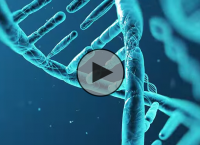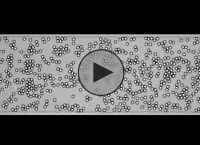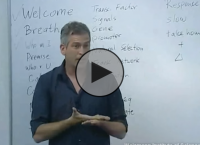New Data Visualization Technique: Summarized Video
YEDA Research and Development Company LTD., the commercial arm of the Weizmann Institute of Science, today announced it has entered into a license agreement with Adobe Systems Incorporated related to a bidirectional similarity measure to summarize visual data.
The bidirectional similarity method developed by Prof. Michal Irani and Drs. Denis Simakov, Yaron Caspi and Eli Shechtman of the Institute's Computer Science and Applied Mathematics Department is a technique for summarizing visual data -- both still images and video. Rather than cropping or scaling down an image to obtain a smaller thumbnail, or clipping a video segment, the method produces a complete and coherent visual summary: a smaller or shorter version of the original that retains the most relevant information
More details: http://wis-wander.weizmann.ac.il/yeda-collaborates-with-adobe-for-new-data-visualization-technique
#ויצמן #מכוןויצמן #weizmann #weizmanninstitute #מדע #science #research #מחקר #scientist #art #computerscience #mathematics #math #WeizmannInstituteofScience #מכוןויצמןלמדע
New Data Visualization Technique: Original Video
YEDA Research and Development Company LTD., the commercial arm of the Weizmann Institute of Science, today announced it has entered into a license agreement with Adobe Systems Incorporated related to a bidirectional similarity measure to summarize visual data.
The bidirectional similarity method developed by Prof. Michal Irani and Drs. Denis Simakov, Yaron Caspi and Eli Shechtman of the Institute's Computer Science and Applied Mathematics Department is a technique for summarizing visual data -- both still images and video. Rather than cropping or scaling down an image to obtain a smaller thumbnail, or clipping a video segment, the method produces a complete and coherent visual summary: a smaller or shorter version of the original that retains the most relevant information
More details: http://wis-wander.weizmann.ac.il/weizmann-invention-visual-summarization#.UcF8WflHLXI
#ויצמן #מכוןויצמן #weizmann #weizmanninstitute #מדע #science #research #מחקר #scientist #art #computerscience #mathematics #math #WeizmannInstituteofScience #מכוןויצמןלמדע
What is the Next Step in the Evolution of Information?
Find out with Prof. Michal Irani of the Weizmann Institute.
#ויצמן #מכוןויצמן #weizmann #weizmanninstitute #מדע #science #research #מחקר #scientist #evolution #information #ai #WeizmannInstituteofScience #מכוןויצמןלמדע
A Trillion Computers
A group of scientists headed by Prof. Ehud Shapiro at the Weizmann Institute of Science has used biological molecules to create a tiny computer - a programmable two-state, two-symbol finite automaton - in a test tube. This biological nanocomputer is so small that a trillion (1,000,000,000,000) such computers co-exist and compute in parallel, in a drop the size of 1/10 of a milliliter of watery solution held at room temperature. Collectively, the computers perform a billion operations per second with greater than 99.8% accuracy per operation while requiring less than a billionth of a Watt of power. This study may lead to future computers that can operate within the human body, interacting with its biochemical environment to yield far-reaching biological and pharmaceutical applications.
#ויצמן #מכוןויצמן #weizmann #weizmanninstitute #מדע #science #research #מחקר #scientist #immunesystem #health #medicine #lifescience #biology #computer #WeizmannInstituteofScience #מכוןויצמןלמדע
WEIZAC - The first electronic computer in Israel, 1954
The history of the first electronic computer in Israel, and one of the first in the world, and the ceremony recognizing WEIZAC as a key historical milestone in the history of computing by IEEE. (English from 1:19)
#ויצמן #מכוןויצמן #weizmann #weizmanninstitute #מדע #science #research #מחקר #scientist #history #electroniccomputer #historical #WeizmannInstituteofScience #מכוןויצמןלמדע
למה כולם רוצים מחשב קוונטי?, פרופ' יובל גפן | מדע על הבר 2011
איך ייראו מחשבים קוונטיים ועולם המדע? מה בדיוק הייתה תרומתו של איינשטיין לרעיון?
פרופ' יובל גפן בהרצאה באירוע מדע על הבר, דצמבר 2011, תל אביב
What will quantum computers and the world of science look like? What exactly was Einstein's contribution to the idea? Prof. Yuval Gefen presents a talk at the Science on Tap - Winter Edition event held in Tel Aviv, Dec 2011
#ויצמן #מכוןויצמן #weizmann #weizmanninstitute #מדע #science #מדעעלהבר #קוונטי #איינשטיין @einstein #scienceontap #WeizmannInstituteofScience #מכוןויצמןלמדע
סודות והוכחות | פרופ' שפי גולדווסר
מה הקשר בין קריפטוגרפיה למתמטיקה? פרופ' שפי גולדווסר מסבירה מה בין הגלוי לנסתר
#ויצמן #מכוןויצמן #weizmann #weizmanninstitute #מדע #science #קריפטוגרפיה #מתמטיקה #mathematics #maths #WeizmannInstituteofScience #מכוןויצמןלמדע
האם מחשבים יכולים ללמוד ולחזות את עתידנו? אוהד מנור | מדע על הבר
מה יהיה ערך מניה בעוד שבוע? האם ירד מחר גשם? איזו קבוצה תעפיל לגמר ליגת האלופות? אם אנחנו מאמינים שהתשובה לכל אחת מהשאלות האלה אינה אקראית, נוכל לנסות ללמד מחשב כיצד לחזות תוצאות עתידיות. האם מחשבים שיבחנו את הגנים שלנו, ידעו לקבוע כיצד הם משפיעים על זהותנו, על תכונותינו ועל עתידנו?
אוהד מנור, מכון ויצמן למדע. בירה, מדע ומצב רוח 2013, רחובות
#ויצמן #מכוןויצמן #weizmann #weizmanninstitute #מדע #science #מחשב #computer #גנים #AI #WeizmannInstituteofScience #מכוןויצמןלמדע
האם אפשר לחזות חילופי אופנה באמצעות נוסחאות? אור כהן | מדע על הבר
שיטות מתקדמות בפיסיקה משמשות לחיזוי התנהגות משותפת של חלקיקים, בין אם אלה מיליארדי מולקולות המרכיבות טיפת מים, או מיליארדי כוכבים המרכיבים גלקסיה. האם אפשר להשתמש בשיטות אלה כדי לתאר את התנהגותם של בני-אדם, ולחזות תופעות כמו פקקי תנועה, קריסות של שוק ההון וחילופי אופנה?
אור כהן, מכון ויצמן למדע. בירה, מדע ומצב רוח 2013, רחובות
#ויצמן #מכוןויצמן #weizmann #weizmanninstitute #מדע #science #מדעעלהבר #שוקההון #פיסיקה #פיזיקה #מולקולה #גלקסיה #galaxy #WeizmannInstituteofScience #מכוןויצמןלמדע
















